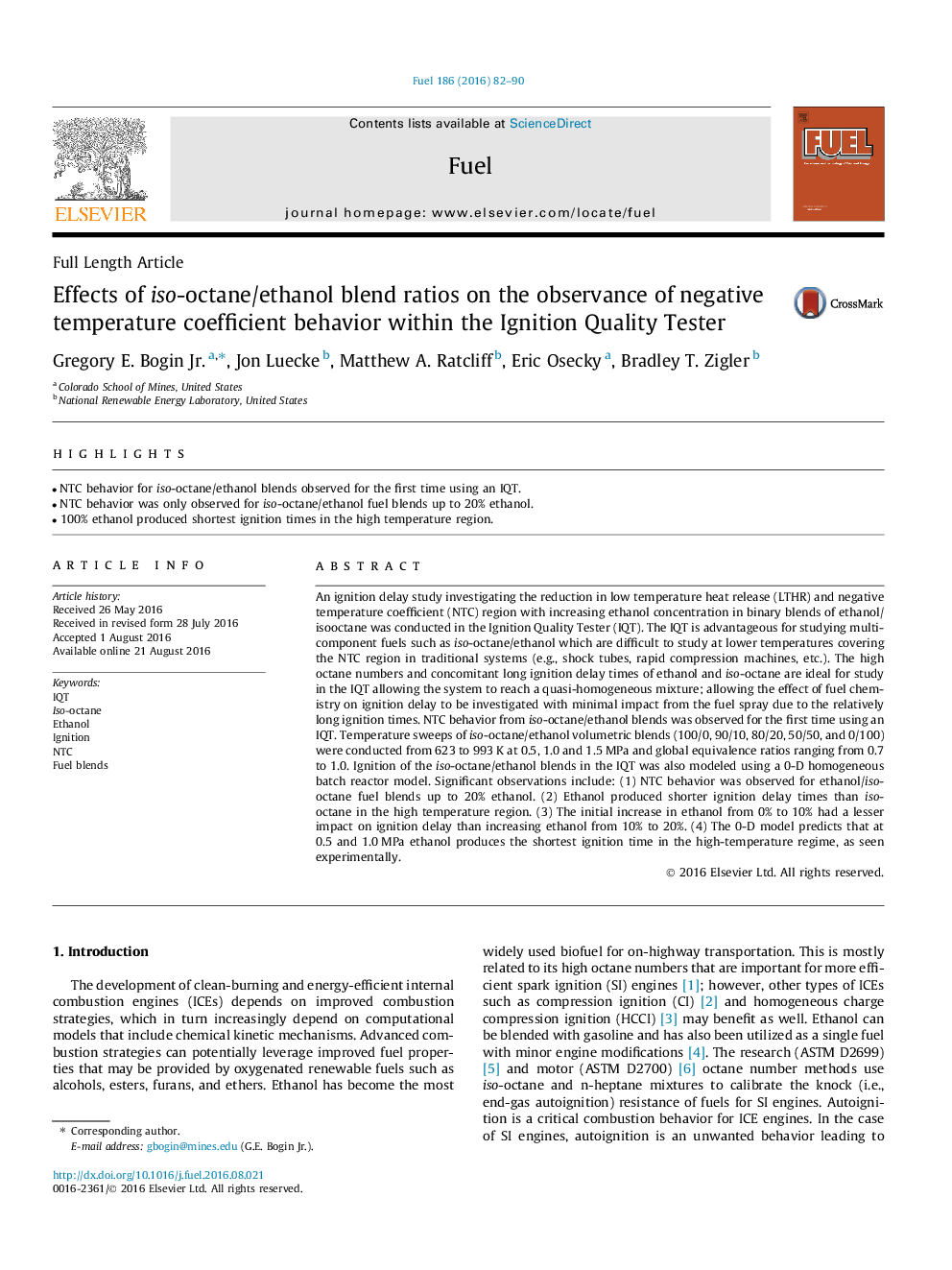| کد مقاله | کد نشریه | سال انتشار | مقاله انگلیسی | نسخه تمام متن |
|---|---|---|---|---|
| 6476011 | 1424978 | 2016 | 9 صفحه PDF | دانلود رایگان |
• NTC behavior for iso-octane/ethanol blends observed for the first time using an IQT.
• NTC behavior was only observed for iso-octane/ethanol fuel blends up to 20% ethanol.
• 100% ethanol produced shortest ignition times in the high temperature region.
An ignition delay study investigating the reduction in low temperature heat release (LTHR) and negative temperature coefficient (NTC) region with increasing ethanol concentration in binary blends of ethanol/isooctane was conducted in the Ignition Quality Tester (IQT). The IQT is advantageous for studying multi-component fuels such as iso-octane/ethanol which are difficult to study at lower temperatures covering the NTC region in traditional systems (e.g., shock tubes, rapid compression machines, etc.). The high octane numbers and concomitant long ignition delay times of ethanol and iso-octane are ideal for study in the IQT allowing the system to reach a quasi-homogeneous mixture; allowing the effect of fuel chemistry on ignition delay to be investigated with minimal impact from the fuel spray due to the relatively long ignition times. NTC behavior from iso-octane/ethanol blends was observed for the first time using an IQT. Temperature sweeps of iso-octane/ethanol volumetric blends (100/0, 90/10, 80/20, 50/50, and 0/100) were conducted from 623 to 993 K at 0.5, 1.0 and 1.5 MPa and global equivalence ratios ranging from 0.7 to 1.0. Ignition of the iso-octane/ethanol blends in the IQT was also modeled using a 0-D homogeneous batch reactor model. Significant observations include: (1) NTC behavior was observed for ethanol/iso-octane fuel blends up to 20% ethanol. (2) Ethanol produced shorter ignition delay times than iso-octane in the high temperature region. (3) The initial increase in ethanol from 0% to 10% had a lesser impact on ignition delay than increasing ethanol from 10% to 20%. (4) The 0-D model predicts that at 0.5 and 1.0 MPa ethanol produces the shortest ignition time in the high-temperature regime, as seen experimentally.
Journal: Fuel - Volume 186, 15 December 2016, Pages 82–90
